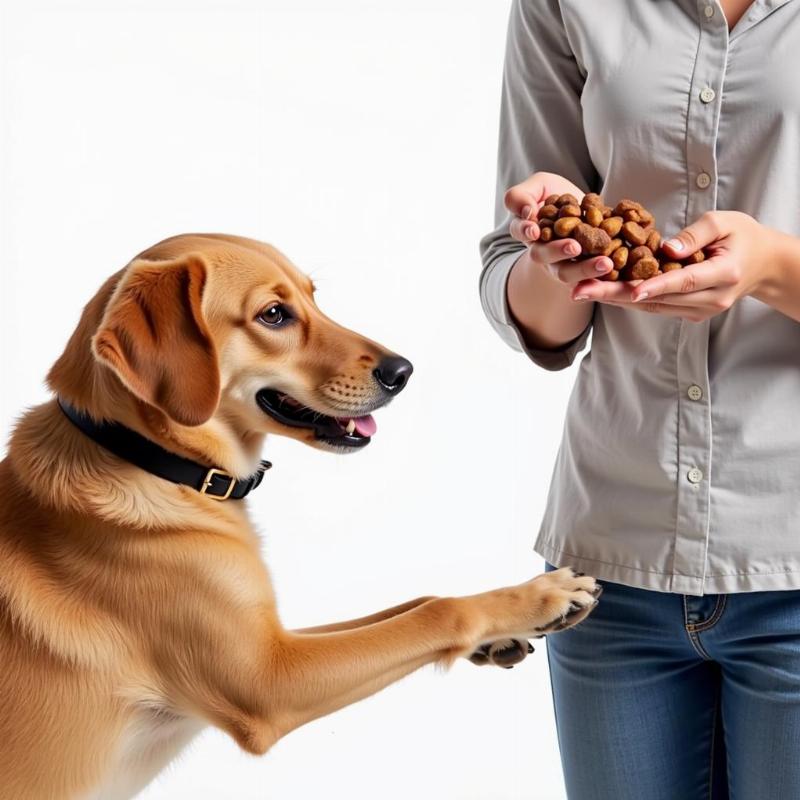Getting the right fit for your dog’s boots is crucial for their comfort and safety. Ill-fitting boots can rub, cause blisters, or even fall off, rendering them useless. This guide will show you exactly how to measure dog paws for boots, ensuring a perfect fit every time. We’ll cover everything from the tools you need to tips for tricky paws, making the process as smooth as possible.
Measuring your dog’s paws might seem daunting, but with the right approach, it’s a simple task. The key is patience and a little bit of coaxing, especially if your furry friend isn’t used to having their paws handled. Having the right size boots will protect your dog’s paws from harsh weather conditions, hot pavement, and rough terrain. Plus, correctly measured boots will stay on, giving you peace of mind on your adventures together.
Gathering Your Supplies for Paw Measurement
Before you begin, gather everything you’ll need. This includes:
- A flexible measuring tape or ruler: A soft, flexible tape measure is ideal as it conforms to the shape of your dog’s paw. A ruler can also work but requires extra care to ensure accuracy.
- Treats: These will be your best friend throughout the process. Use high-value treats to keep your dog engaged and cooperative.
- Paper and pen: Jot down the measurements as you go so you don’t forget.
- A patient helper (optional): If your dog is particularly wiggly, an extra set of hands can be invaluable.
Step-by-Step Guide on How to Measure Your Dog’s Paws
Now, let’s get to the actual measuring. Follow these steps for accurate paw measurements:
- Place the paw on paper: Gently place your dog’s paw on a piece of paper. Make sure the paw is flat, as if your dog were standing normally. Use treats to encourage your dog to keep their paw still.
- Mark the widest part: Using your pen, mark the widest part of the paw, across the pads. This is usually just below the toes.
- Mark the length of the paw: Measure from the back of the paw pad to the tip of the longest nail. Mark this point on the paper.
- Measure the width: Use your measuring tape or ruler to measure the distance between the two width marks you made. This is the width of your dog’s paw.
- Measure the length: Measure the distance between the back of the paw pad mark and the tip of the longest nail mark. This is the length of your dog’s paw.
Dealing with Difficult Paws and Ensuring Accuracy
Some dogs are less cooperative than others. Here are some tips for dealing with tricky paws:
- Distraction is key: Have a helper distract your dog with treats and toys while you take the measurements.
- Take breaks: If your dog gets restless, take a break and try again later.
- Measure multiple times: Measure each paw several times to ensure consistency. Dogs often have slightly different sized paws, so measure all four and use the largest measurements when selecting boots.
Why measure all four paws? Just like us, dogs can have slightly different sized paws. Using the largest measurements ensures a comfortable fit for all paws.
 Measuring Tricky Paws
Measuring Tricky Paws
Understanding Dog Boot Sizing Charts
Once you have your dog’s paw measurements, consult the sizing chart provided by the boot manufacturer. Don’t rely solely on breed or weight as paw sizes can vary significantly. Most charts will list sizes based on paw width and length. Choose the boot size that corresponds to the largest measurements you took.
Dr. Emily Carter, a veterinarian in New York City, advises, “Always prioritize the largest paw measurement. A slightly larger boot is preferable to one that’s too tight.”
Conclusion
Measuring your dog’s paws for boots is an essential step in ensuring their comfort and paw protection. By following the simple steps outlined in this guide and referring to the manufacturer’s sizing chart, you can find the perfect fit for your furry friend. Remember to measure all four paws and use the largest measurements to guide your selection. Happy booting!
FAQs
- Do I need to measure all four paws? While front and back paws are often similar, it’s best to measure all four as there can be slight variations. Use the largest measurements.
- My dog won’t let me touch their paws. What should I do? Try using high-value treats and lots of praise. If they remain resistant, consult a professional groomer or veterinarian for assistance.
- What if the boot size is between two sizes? It’s generally better to choose the slightly larger size to prevent discomfort and rubbing.
- How often should I replace my dog’s boots? This depends on the frequency of use and the terrain. Regularly inspect the boots for wear and tear and replace them as needed.
- Can my dog wear boots all the time? No, boots should not be worn continuously. They should primarily be used for protection in specific situations.
- What type of boots are best for my dog? The best type of boot depends on the intended use. Consider factors like weather conditions, terrain, and your dog’s activity level.
- Where can I find dog boots in the right size? Dog boots are available at most pet stores and online retailers.
Beautdogs.us is your one-stop shop for all things dog-related in the US! We offer expert advice on dog breeds, care, and the best products on the market. Whether you’re a new dog owner or a seasoned pro, Beautdogs.us is your trusted source for comprehensive and engaging information on all things canine. Contact us today for personalized advice! Email: [email protected], Phone: +1 501-555-7529.